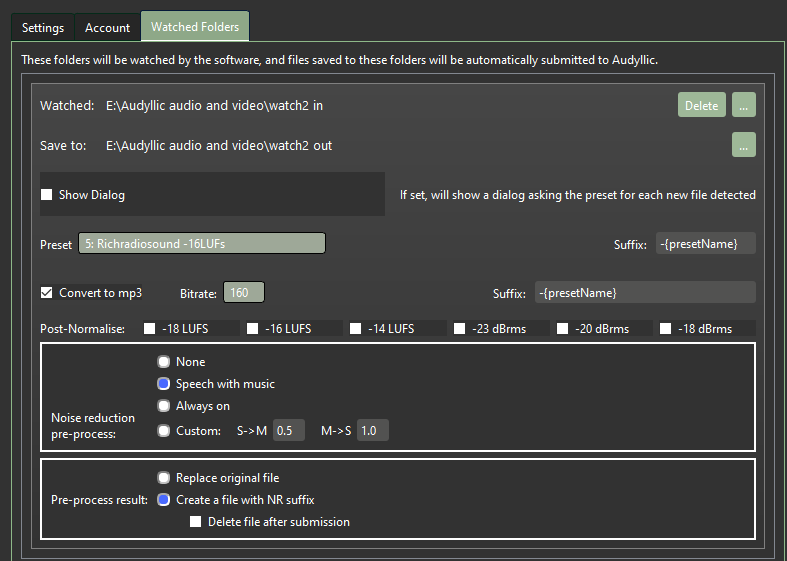Audible have some very stringent standards that they apply to audiobooks that they publish. (See here for complete details).
One of the requirements is that the audio file must measure between -23dB and -18dB RMS, and must have peak values no higher than -3dB.
Although RMS and LUF’s are different ways of representing the loudness of an audio file, (LUF’s being a more modern and nuanced standard, and strictly speaking RMS is just a measurement of power) there is no direct correlation between them.
LUF’s (which stands for ‘loudness units relative to full scale’) is a modified method that incorporates RMS power measurement methods to analyse loudness but also takes into account the apparent perceived differences that certain frequency sounds have on loudness, for example, the ear hears mid-range frequencies as louder than low frequency sounds.
It turns out that speech files that are processed in Audyllic using Optimods’ algorithms (which incorporate an intelligent speech recognition engine) set to -16dB LUF will measure between -18 and -23 RMS, and so pass the ACX test! (You will still have to manually edit out pauses and mouse or switch clicks, and ensure that any background noise is suppressed or filtered to be sure of passing the test however). try it and see at https://www.acx.com/mp/audiolab (registration required).




